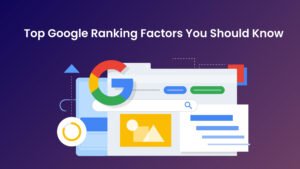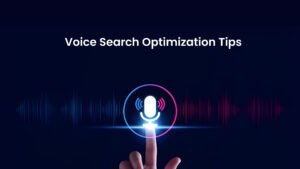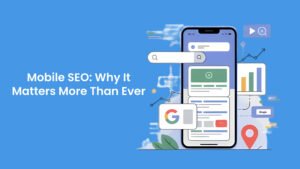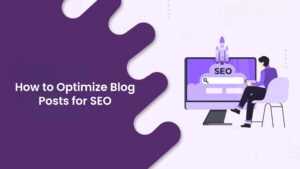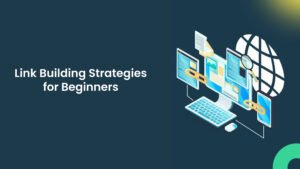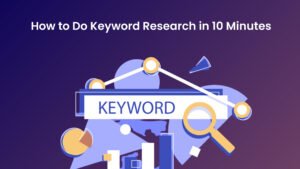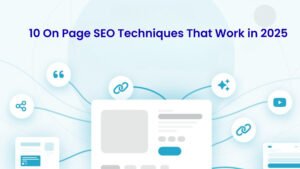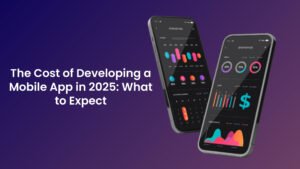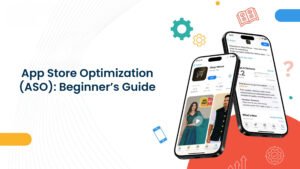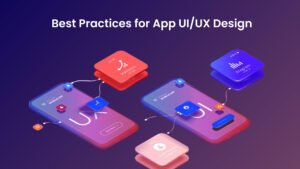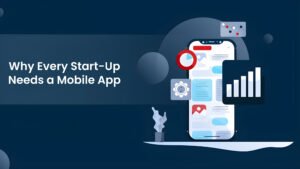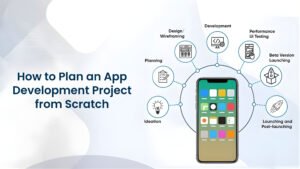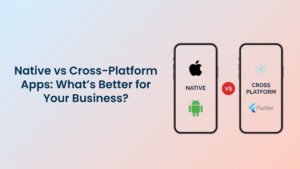1. Introduction
Artificial Intelligence is no longer something you only read about in science fiction. It has quietly moved into the heart of modern business, transforming how companies operate, make decisions, and serve customers. What once sounded like a distant future is now happening in real boardrooms, shop floors, hospitals, and customer service centers.
When we talk about AI in business, we are not talking about experiments hidden inside research labs. We are talking about systems that millions of people interact with every day without even realizing it. Every time Netflix suggests a show you end up binge-watching, or your bank flags a suspicious transaction before you notice it, you are seeing AI at work.
What makes this shift so powerful is not just the technology itself but the scale at which it is being applied. Businesses across industries have moved beyond pilot projects into full-scale adoption. They are using AI to cut costs, predict trends, discover insights, and create customer experiences that feel almost personalized to the individual.
This article explores 10 real-world AI examples that are not just impressive demonstrations but practical case studies of companies already reaping measurable results. From retail giants fine-tuning your shopping cart to healthcare providers improving diagnoses, these AI use cases in 2025 show us how far we have come.
By the end, you will see why AI is not a buzzword anymore but a foundational part of how businesses grow, compete, and survive.
2. AI in Retail and E-commerce
Retail has always been about understanding what people want and delivering it better than anyone else. The problem is, in a world of millions of customers and billions of products, that kind of precision is impossible for humans alone. This is where AI has completely reshaped the game.
Amazon and the Recommendation Engine
Amazon is one of the most famous examples of AI in business. Its recommendation engine doesn’t just suggest products randomly. It studies your browsing history, purchase behavior, items you’ve clicked but not bought, and even what other people with similar habits purchased. This is why, after buying a phone, you instantly see cases, chargers, and screen protectors popping up in your feed. Amazon has reported that its recommendation system drives over 35% of its sales. That is not just a side feature. It is a core driver of revenue.
Walmart and Supply Chain Optimization
On the other end of retail, Walmart uses AI to manage one of the most complex supply chains in the world. Imagine millions of products moving across thousands of stores and warehouses. Even a tiny inefficiency at that scale means millions in losses. Walmart’s AI predicts demand more accurately, adjusts inventory in real time, and helps reduce waste. For instance, AI tools analyze weather data and social media chatter to anticipate spikes in sales. If there is a storm coming, Walmart’s system ensures shelves are stocked with essentials like flashlights and bottled water ahead of time.
Personalized Shopping Experiences
Another real-world AI example comes from companies like Sephora. Their AI-powered app allows customers to try makeup virtually using augmented reality and computer vision. Instead of guessing how a lipstick shade might look, shoppers can see it on their own face before buying. This doesn’t just improve customer experience; it reduces return rates and boosts confidence in online purchases.
Why It Matters
What these AI case studies show us is that retail is no longer about selling to the masses. It’s about tailoring every single experience. In 2025, companies using AI in retail are not only surviving but leading the industry. AI helps them understand demand, manage inventory, and make shopping more personal than ever.
3. AI in Healthcare
Few industries have more at stake than healthcare. A single decision can change or save a life, and the sheer amount of data doctors and hospitals deal with is overwhelming. AI has stepped in as a partner, not a replacement, helping healthcare providers make faster and more accurate choices.
IBM Watson Health and Mayo Clinic
IBM Watson Health was one of the first large-scale attempts to bring AI into real-world medicine. At the Mayo Clinic, Watson was used to match cancer patients with the most suitable clinical trials. Normally, this process takes doctors weeks of cross-checking records and trial requirements. Watson could analyze patient data and clinical trial information in minutes, giving doctors a shortlist of matches. While Watson had its limitations, it sparked a movement where AI became a core tool in clinical research and patient care.
DeepMind and the NHS
In the UK, Google’s DeepMind partnered with the National Health Service to tackle a problem that affects thousands of patients: kidney disease. Their AI model could predict acute kidney injury up to 48 hours before it became life-threatening. Doctors received alerts early enough to intervene, preventing complications and saving lives. This is a clear real-world AI example where algorithms literally made the difference between life and death.
AI in Diagnostics
AI is also transforming diagnostics. PathAI, for example, uses machine learning to assist pathologists in analyzing tissue samples. Studies show that AI systems can identify certain cancers with equal or better accuracy than human specialists. Radiology has also seen a breakthrough. AI tools help scan X-rays and MRIs, flagging anomalies faster than traditional processes. Instead of waiting days, patients can sometimes get results in hours.
Predictive Analytics and Preventive Care
Hospitals like Mount Sinai in New York have deployed AI systems that track patient data in real time. By analyzing heart rate, blood pressure, and lab results, AI predicts who might develop sepsis or other critical conditions before symptoms become obvious. Early action means fewer complications and better patient outcomes.
Why It Matters
These AI case studies prove that healthcare is not just about treating illness anymore. It is about predicting and preventing problems before they happen. In 2025, companies using AI in healthcare are setting a new standard where speed, accuracy, and foresight are as important as bedside care.
4. AI in Finance and Banking
Money moves faster than ever, and with that speed comes both opportunity and risk. Banks, investment firms, and fintech startups are turning to AI to keep up. From spotting fraud in real time to managing billions in assets, AI has become a core part of modern finance.
JPMorgan Chase and COiN
One of the clearest AI use cases in business is JPMorgan Chase’s Contract Intelligence platform, better known as COiN. Traditionally, reviewing commercial loan agreements required lawyers and analysts to spend hundreds of thousands of hours every year going through paperwork. COiN can analyze thousands of contracts in seconds with greater accuracy. It doesn’t just save time, it reduces human error. By automating what used to be tedious legal work, JPMorgan freed its staff to focus on higher-value tasks like client strategy and risk management.
Mastercard and Visa in Fraud Detection
Fraud is a billion-dollar problem. Credit card companies like Mastercard and Visa use AI to monitor transactions in real time. Every time you swipe your card, AI models instantly evaluate dozens of data points: location, spending history, device used, even time of day. If something looks suspicious, the system flags it within milliseconds. This explains why your card company sometimes blocks a purchase before you even realize anything is wrong. These models learn continuously, adapting to new fraud patterns that traditional rule-based systems would miss.
AI in Wealth Management
It’s not only big banks benefiting from AI. Fintech companies like Betterment and Wealthfront have built entire businesses on AI-powered investment advice. These platforms act as “robo-advisors,” creating personalized portfolios based on your risk tolerance, goals, and income. Instead of paying a human financial advisor hefty fees, millions of users now rely on these AI-driven services to grow their savings. The platforms continuously rebalance portfolios and optimize tax strategies automatically, making professional-level wealth management available to everyday people.
Risk Assessment and Credit Scoring
AI is also changing how banks decide who gets a loan. Companies like Upstart are using machine learning models that look beyond traditional credit scores. Instead of focusing only on income and credit history, AI evaluates education, employment history, and even spending behavior to assess risk more fairly. This has opened doors for many borrowers who might otherwise have been rejected by traditional scoring systems.
Why It Matters
The financial sector runs on trust and speed. These AI case studies prove that algorithms are becoming trusted guardians of money, protecting against fraud, guiding investments, and expanding access to credit. In 2025, companies using AI in finance are not just saving billions—they are redefining what financial services mean for both businesses and individuals.
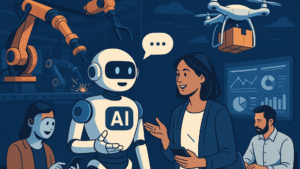
5. AI in Manufacturing and Supply Chain
Factories, warehouses, and logistics networks are the backbone of global commerce. They also generate mountains of data—machine performance, shipment tracking, quality checks, fuel costs, and so on. For decades, businesses struggled to make sense of it all. AI has turned that challenge into an opportunity by finding patterns humans miss and predicting problems before they disrupt operations.
Siemens and Predictive Maintenance
Siemens is a great real-world AI example of predictive maintenance in action. Industrial machines break down, and when they do, companies lose millions in downtime. Siemens uses AI algorithms that monitor equipment through sensors, identifying subtle signs of wear or failure long before a breakdown occurs. Instead of waiting for a machine to fail, engineers receive early warnings and can schedule maintenance during planned downtime. This saves both time and money while extending the lifespan of expensive equipment.
Tesla and Smart Production Lines
Tesla has become a symbol of AI-driven manufacturing. Beyond the cars themselves, the company uses AI to run its production lines. Machine learning models adjust assembly robots in real time, optimizing speed and precision while reducing defects. Every Tesla rolling out of the factory is essentially part of a massive feedback loop: the vehicles send performance data back to the company, and that data helps improve both production and design. This is AI not only creating products but continuously improving the way they are made.
DHL and UPS in Logistics
Moving goods around the world is one of the most complex operations imaginable. Companies like DHL and UPS have turned to AI for routing and delivery optimization. Their systems analyze traffic, weather conditions, fuel efficiency, and package density to create the most efficient delivery paths. UPS’s AI platform, ORION, has reportedly saved the company hundreds of millions of dollars annually by reducing miles driven and fuel consumed. Even shaving off one mile per driver per day translates to massive savings at global scale.
Quality Control with Computer Vision
Many manufacturers, from electronics giants like Samsung to food producers like Nestlé, now use AI-driven computer vision systems for quality control. Cameras linked to AI models inspect products at speeds far beyond human capability, spotting defects that might otherwise slip through. This ensures higher consistency and fewer returns, which strengthens brand trust.
Why It Matters
These AI case studies prove that manufacturing and supply chains are no longer about brute force and manpower alone. Efficiency today depends on intelligence. In 2025, companies using AI in production and logistics are the ones staying competitive by cutting waste, improving reliability, and creating a feedback loop that keeps getting smarter over time.
6. AI in Marketing and Customer Experience
Marketing has always been about understanding people—what they want, when they want it, and how to connect with them in a way that feels genuine. The challenge is that customer expectations have grown sky-high. People want personalization, speed, and relevance, all at once. That is where AI has become the quiet engine behind modern marketing.
Coca-Cola and AI-Driven Creativity
Coca-Cola is a great real-world AI example of how a brand can stay fresh in a competitive market. The company uses AI not just for analyzing data but for creating content. By studying massive amounts of customer feedback and sales data, AI suggests new flavors and marketing campaigns. One striking case was Coca-Cola using AI tools to design a new flavor concept and even draft ad visuals that were later refined by human creatives. The mix of machine insights and human storytelling allowed the brand to stay ahead in customer engagement.
Sephora and AI-Powered Chatbots
Beauty retailer Sephora has leaned heavily on AI to improve customer experience. Its AI chatbot, available on both the website and messaging platforms, helps customers find products tailored to their skin type, preferences, and past purchases. Instead of browsing through hundreds of items, shoppers get personalized recommendations instantly. The chatbot can even book in-store appointments, turning what could be a frustrating search into a smooth journey.
Starbucks and Personalized Rewards
Starbucks takes personalization to another level with its AI-driven rewards app. Every time a customer orders, the system learns more about their preferences. By analyzing purchase history, time of day, and location, Starbucks sends offers and drink suggestions that feel almost handpicked. For example, if you usually order iced coffee on hot afternoons, the app might suggest a similar beverage just as the weather warms up. This is AI making customer loyalty both profitable and personal.
Netflix and Customer Retention
Although Netflix is often thought of as entertainment, it is also one of the strongest examples of AI in business for customer retention. Its recommendation engine is designed to keep users watching. By analyzing viewing patterns down to the time spent on each show, Netflix creates personalized suggestions that reduce churn. The AI doesn’t just know what you like; it knows when you are likely to watch, helping the platform keep millions of subscribers engaged worldwide.
Why It Matters
These AI case studies reveal a clear truth: people don’t want generic ads or one-size-fits-all experiences anymore. They want brands to understand them. In 2025, companies using AI in marketing and customer service are standing out because they deliver that personal touch at scale. AI has become the bridge between data and real human connection, helping businesses meet customers where they are with what they actually want.
7. AI in Human Resources and Recruitment
For decades, hiring has been a slow, biased, and often frustrating process for both employers and job seekers. Sorting through resumes, scheduling interviews, and making fair decisions is a challenge at scale. AI has stepped in as a powerful partner in HR, helping companies save time, reduce bias, and make smarter decisions about people.
Unilever and AI-Powered Hiring
Unilever is one of the strongest real-world AI examples in recruitment. The company receives millions of applications every year, and instead of relying on recruiters alone, it uses AI platforms like HireVue. Candidates record video interviews that AI systems analyze for speech patterns, word choice, and even facial expressions. While the final decision still rests with human managers, AI acts as a filter that highlights the most promising applicants. Unilever reported that this approach cut hiring time by 75 percent and improved diversity by surfacing talent that might have been overlooked through traditional methods.
LinkedIn and Smart Job Matching
LinkedIn is another everyday example of AI in business. Its recommendation engine doesn’t just connect people—it predicts which job seekers and recruiters might be the right match. AI looks at your profile, career history, skills, and even engagement activity to suggest job openings you might not have searched for. On the employer side, LinkedIn Recruiter uses AI to highlight potential candidates, reducing the guesswork in sourcing. This has made hiring more proactive, less about waiting for applications and more about finding talent before competitors do.
Internal HR Analytics
It’s not just about hiring new people. Companies are using AI to keep their existing teams happy and productive. For example, IBM’s HR department uses predictive analytics to forecast which employees might be considering leaving. By identifying patterns in performance, workload, and career progression, AI helps managers step in with promotions, training, or support before talent walks out the door. This is retention strategy powered by data.
Reducing Bias in Recruitment
Another big advantage of AI in HR is fairness. Traditional hiring processes are prone to unconscious bias—favoring certain schools, names, or backgrounds. AI systems can anonymize candidate data and focus on skills and performance indicators rather than personal details. While AI is not a perfect solution, when designed responsibly, it creates a more level playing field.
Why It Matters
These AI case studies show that finding and keeping talent is no longer just about gut feelings or resumes stacked on a desk. In 2025, companies using AI in HR and recruitment are building stronger teams faster and making hiring more inclusive. By combining human judgment with AI insights, businesses are creating workplaces that are both efficient and fair.
9. Lessons from These AI Case Studies
Looking across these real-world AI examples, a few themes stand out. Whether it is retail, healthcare, finance, manufacturing, or energy, the businesses getting real results from AI are the ones treating it as a core strategy, not just a shiny experiment.
1. AI Works Best with Data at Scale
Amazon, Netflix, and JPMorgan Chase succeed with AI because they sit on mountains of data. Their systems learn from billions of transactions, clicks, and contracts. The lesson is clear: the more structured and high-quality data you feed AI, the more valuable insights it can return. Companies without proper data foundations often struggle to see results.
2. AI Doesn’t Replace Humans, It Extends Them
From Unilever’s recruitment process to PathAI’s cancer diagnostics, AI is not about removing people from the equation. It is about giving them better tools. Doctors still make final calls, recruiters still interview candidates, and engineers still run factories. What changes is that AI takes care of the heavy lifting—sorting, scanning, predicting—so humans can focus on decisions that require judgment and empathy.
3. Personalization is No Longer Optional
In marketing, customer service, and even banking, personalization is now the baseline expectation. Starbucks, Sephora, and LinkedIn show that companies using AI to tailor experiences are winning customer loyalty. Those that don’t will feel outdated quickly.
4. Predictive Over Reactive
The shift from reactive to predictive decision-making is another common thread. Siemens predicts machine failures before they happen. Google DeepMind forecasts cooling needs in data centers. Hospitals anticipate sepsis before it develops. AI turns hindsight into foresight, and that foresight saves money, time, and lives.
5. Competitive Advantage Comes from Early Adoption
These AI case studies also show that being an early mover matters. Companies that embraced AI years ago are now operating on a different level than their competitors. Netflix is not just a streaming platform—it’s an AI company that happens to deliver movies and shows. Tesla is not just a car maker—it’s an AI-driven ecosystem of vehicles, factories, and data loops.
Why These Lessons Matter for 2025
The biggest mistake businesses can make today is assuming AI is optional. By 2025, it has already become a standard part of operations across industries. The real question is no longer whether to adopt AI but how to apply it meaningfully in your business model. The gap between companies using AI effectively and those lagging behind is only going to widen.
10. Conclusion
The truth is clear: AI is no longer a future experiment, it is the engine driving today’s most successful businesses. From retail giants predicting what you want to buy, to hospitals detecting life-threatening conditions before symptoms appear, AI is delivering results that are measurable, scalable, and transformative.
The real takeaway from these AI case studies is that adopting AI strategically is no longer optional, it’s a competitive necessity. Every industry we explored—from finance and manufacturing to marketing and energy, is seeing companies leap ahead because they made AI a core part of their operations. The question is not whether AI can help your business; it’s whether you are ready to harness it before your competitors do.
This is where Amatrons Technologies steps in. We specialize in helping businesses like yours integrate AI into operations, marketing, customer experience, and decision-making. Our approach is practical, tailored, and results-driven. We don’t just implement AI tools, we ensure they are optimized to scale your business, improve efficiency, and unlock new revenue streams.
The opportunity is now. Don’t wait while competitors take the lead. Let us help you transform your business with AI, just like the companies in this article are doing today.


